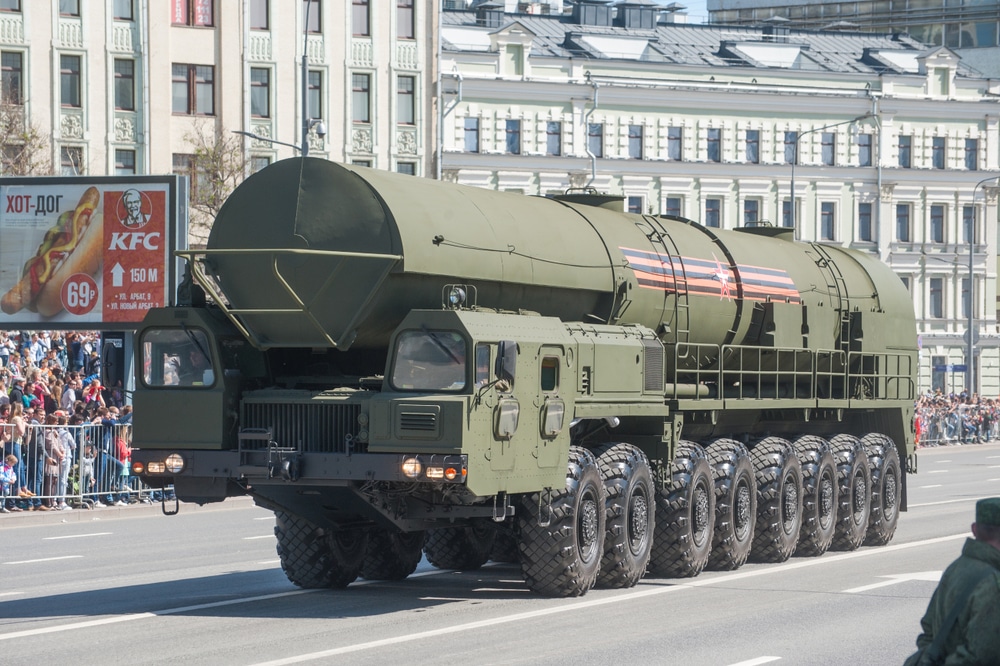Russia fired a hypersonic intermediate-range ballistic missile (IRBM) toward the Ukrainian city of Dnipro on Thursday in response to Ukraine’s recent use of U.S. and UK-supplied long-range missiles to strike targets within Russian territory. The launch, which raised concerns over the potential for nuclear escalation, involved a newly developed missile that Russian officials said was being tested for its capabilities.
According to Ukrainian military sources, the missile that struck Dnipro was one of several missiles launched from Russia’s Astrakhan region. An infrastructure was hit but no casualties were reported.
Reports stated that six other missiles were intercepted by Ukrainian air defense systems. Initially, Ukrainian authorities identified the weapon as an intercontinental ballistic missile (ICBM), but U.S. officials later clarified that it was an experimental IRBM equipped with hypersonic capabilities. The missile carried multiple independently targetable reentry vehicles but was not armed with nuclear warheads, according to Pentagon officials.
CLEAR footage shows alleged Russian ICBM strike on Ukraine’s Dnipro last night.
Multiple warheads were spotted in the footage. pic.twitter.com/H9qel6m8Dc
— Clash Report (@clashreport) November 21, 2024
The Ukrainian Air Force confirmed that Russia struck the Ukrainian city of Dnipro with a conventionally armed ICBM this morning, marking the first combat use of an ICBM in history.
Footage from Dnipro showed glowing reentry vehicles hitting the ground around 5 AM local time. pic.twitter.com/PWTGajH9bT
— OSINTtechnical (@Osinttechnical) November 21, 2024
Pentagon Deputy Press Secretary Sabrina Singh confirmed the missile’s design is based on the RS-26 Rubezh ICBM, adapted for non-nuclear battlefield use. Singh described the missile as a “new type of lethal capability” and acknowledged that the U.S. had been notified of the attack in advance via nuclear risk-reduction channels.
In a televised address following the missile launch, Russian President Vladimir Putin framed the strike as a direct response to Western nations supplying Ukraine with advanced weaponry. “We believe that we have the right to use our weapons against military facilities of the countries that allow [their weapons] to be used against our facilities,” Putin said. He emphasized that the missile was equipped with hypersonic technology and stated, “The test was successful.”
Putin also issued a broader warning to the United States, NATO, and other countries supporting Ukraine, suggesting that they, too, could be targeted if their involvement in the conflict escalated further. Earlier this week, Putin announced updates to Russia’s nuclear doctrine, lowering the threshold for the potential use of nuclear weapons and signaling a hardening stance as the war grinds on.
The Russian strike came days after Ukraine conducted its first attacks on Russian territory using U.S.-supplied Army Tactical Missile Systems and British-made Storm Shadow missiles. These long-range weapons allowed Ukrainian forces to target ammunition depots, command posts, and other critical infrastructure within Russia, including in the Bryansk and Kursk regions.
Pentagon officials and other Western sources have dismissed the attack as an attempt at intimidation, emphasizing that it does not alter the overall trajectory of the conflict. “Russia may be seeking to use this capability to try to intimidate Ukraine and its supporters, but it will not be a game-changer,” a U.S. official said.






